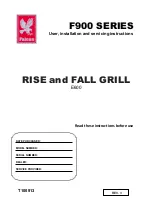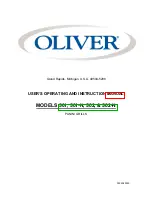
6) Use
1) Additional grip installation (Fig.1)
For your safety, install the additional grip prior to any
operation. Place the grip sleeve to the left or right side
of
the tool according to your preference and tighten.
2) Drill stop installation (Fig.2)
The drill stop ensures a constant drilling depth. Loosen
the grip and insert the drill stop bar to a hole above it.
Set the requested depth and tighten.
3) Chuck adjustment (Fig.3)
Prior to operation, make sure the tool is disconnected
from a power source. The chuck adjustment key is
placed on the tool power cord. Insert the key into the
chuck and loosen by rotating counterclockwise. Insert
the drilling bit into the chuck and tighten firmly rotating
clockwise. Remove the adjustment key and place back
4) ON/OFF (Fig.4)
Depress the ON/OFF switch to start and release to
turn off. For permanently on, use the lock switch
located
on the side of the tool grip. Depress the ON/OFF
switch again to turn the permanent use off.
5) Rotation speed (Fig.5)
The rotation speed can be regulated by the rotation
speed regulator by rotating clockwise or
counterclockwise (marked with + and – symbols).
6) Direction of rotation (Fig.7)
The direction of rotation can be changed by setting the
switch to the 'R' position (forward) or the 'L' position
(reverse). Never change the direction of rotation while
operating the tool. It may cause a tool damage.
7) Drilling / Impact drilling (Fig.8)
For the brickwork and concrete drilling, choose the
Impact drilling (hammer).
For the wood, metal and tiling, choose the drilling
setup only (drill).

































